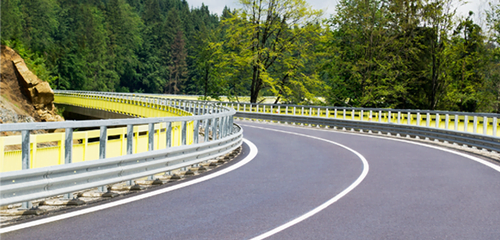
Crash Barriers are barriers used in street plan, and are set up to keep vehicles from going off the street and to improve street security. They are generally observed at locales where it might demonstrate perilous or even lethal if the vehicle inadvertently left the street. Commonplace locales for crash barriers are connecting underpins, mountain streets and middle separators on multi-path parkways.
They are planned with the goal that any vehicle hitting the hindrance is directed back onto the street, and this is now and then accomplished by structuring them so they break at sway permitting the obstruction to distort and redirect the vehicle back onto the street.
Cruisers are helpless against the barriers, and high vehicles, for example, Lorries and vehicles with a high focal point of gravity, are powerless against going over some crash barriers. Better ones have been created since the 1990s and these crash barriers can keep up and lead down vehicles of as much as 40 tons.
Crash barriers may likewise be used to maintain a strategic distance from any harm to property. They can be used to ensure building supports, dividers, and can be used in processing plants to secure defenseless gear and significant apparatus by repulsing and occupying wayward Lorries, forklift trucks, vehicles and production line sweepers.
Crash barriers have following advantages:
- Tested and affirmed
- Highly noticeable
- Protect important hardware
- Little or no upkeep
- Strong sturdy and adaptable
- High effect safe
- Segregate and portray vehicle traffic ways
There are a wide range of kinds of crash boundary systems and they are totally intended to keep vehicles from leaving the street, track or traffic path, regardless of whether this is on the open street, for example, an engine way, mountain track, downtown traffic path, indoor manufacturing plant traffic path, or even around a race track.
The kind of hindrance used will rely upon the sort of traffic, for instance a race track for engine karting will commonly introduce effectively destructible barriers, for example, used car tires. This kind of basic boundary is amazingly compelling at engrossing stuns from crashes and can without much of a stretch be re-built after the incident.
Another kind of boundary is the link hindrance, likewise compelling at redirecting crashes and decreasing the effect on the driver because of the adaptability of the links. This strategy for keeping vehicles from leaving the traffic path or track can at times be seen at stock vehicle hustling circuits.
For more information on crash barriers you can visit www.neptuneautomatic.com

